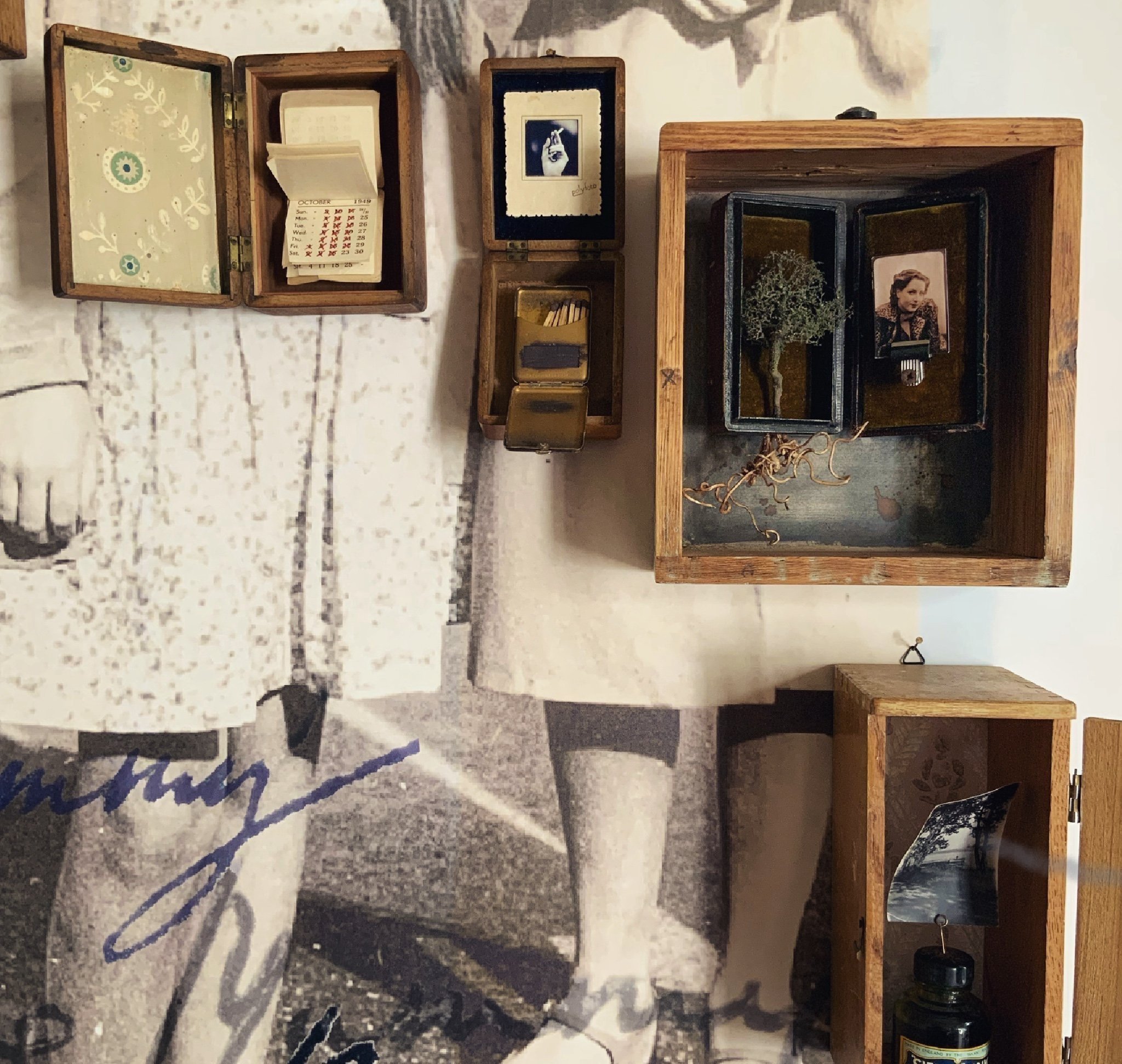“please write me”
In 2019 I paused my commercial practice to embark on an MA in Sequential Design at Brighton University.
With a lifelong interest in found objects and a compelling need to salvage and repurpose, often working new narratives into everyday objects within my creative discipline… a chance find at auction led me to bid on a house clearance suitcase of B&W photographs and provided me with a research project for my MA.
On closer inspection of the suitcase contents, reoccurring faces began to reveal themselves, a young girl squinting into the sun, older in the next image but unmistakably her, standing alongside her brother. In total, 937 photographs capturing a family: at leisure; together; apart; in tailored clothes and international locations depicting a life of wealth and comfort. These photographs a misplaced family archive.
Buried beneath the strewn photographs a collection of letters, correspondence spanning between the 1920s and the 1950s - a series of written exchanges between members of the Carroll family.
These letters provide insights into the life of 'Popsy' as she shares her experiences as a daughter, sister, wife, and mother. Through these letters, we are able to glimpse into Popsy's life at Boarding School, The Land Army, a Convent, an Asylum, and a 6 month spell in Holloway Prison. WW2 forming a surreal backdrop to the already much displaced Popsy.
With research I was able to ascertain the context of Popsys mainly ‘institutionalised’ life, challenging initial assumptions of wealth and privilege to expose a layered and complex amalgamation of trauma, adversity and familial dissonance.
The contents of the discovered suitcase cannot present a complete narrative of a life. Instead, my focus lies on the delicate, fragmented nature of this personal archive, the snapshots and vignettes contained within. The gaps in information, unanswered letters, and unseen details provoke contemplation and inquiry for the viewer. With much of Popsy's life represented as blank spaces between correspondences, it is imperative for us to approach the material with a sense of respectful curiosity rather than projecting a bias. By embracing the "Concept of Curiosity" as proposed by Cecchin (1987), we guard against premature certainty and deepen our understanding of the complexities within the narrative.
Soundscape made in collaboration with sound artist MARY HOOPER












